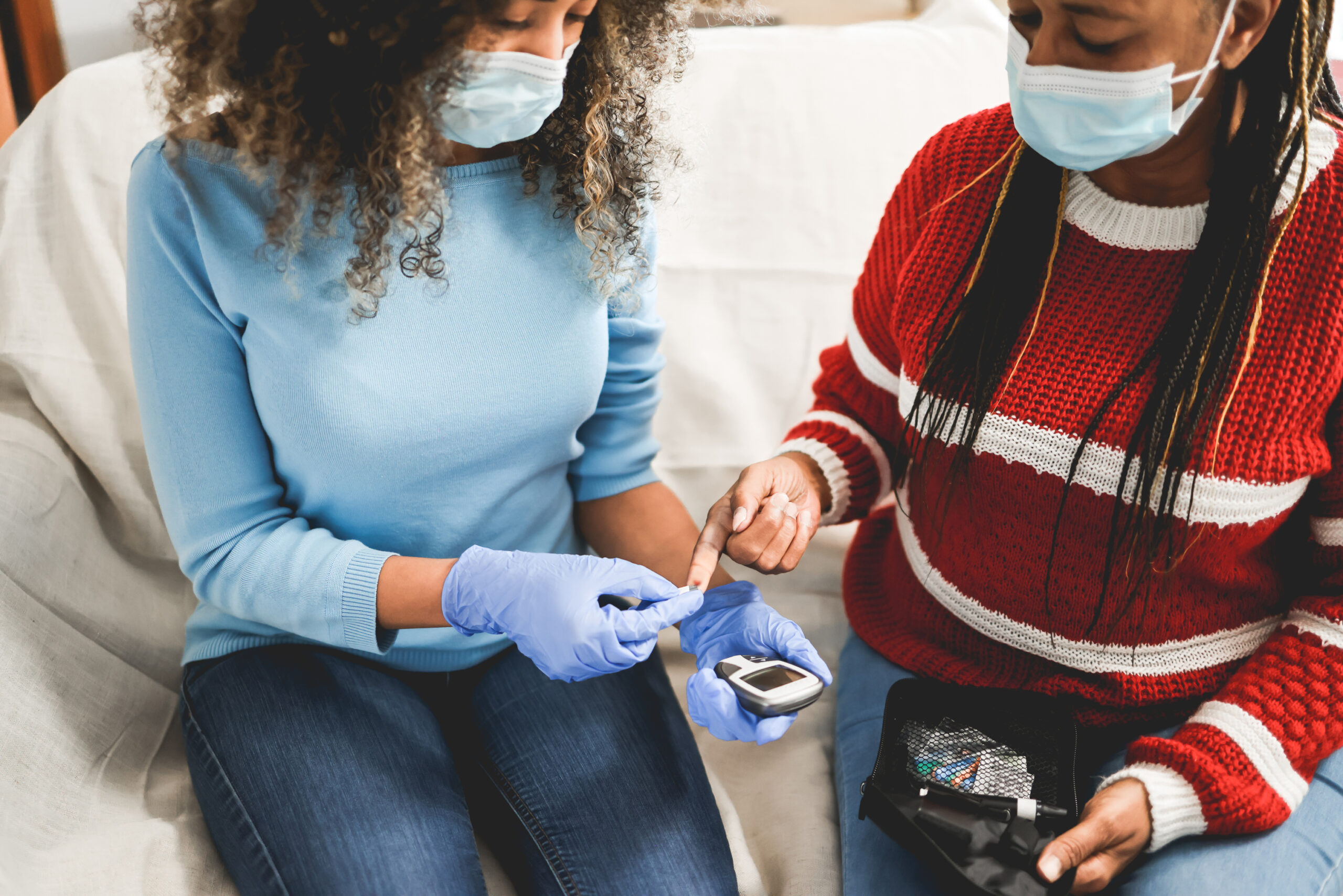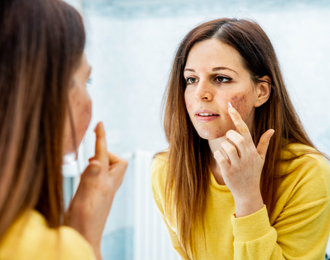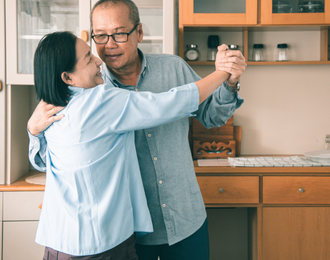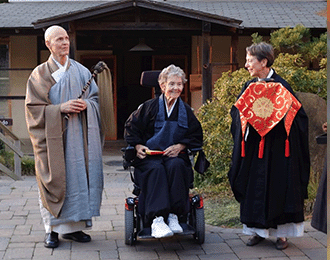Taking Diabetes Management To Another Level | Get Inspired

United States Medical Supply – Updated for December 2021
Author: Shirley DeLeon
A diabetes diagnosis is certainly an emotional time. It’s important to maintain a positive attitude and focus on the bright side. With that in mind, we’re sharing three inspirational stories from those diagnosed with diabetes who focused on the silver linings and met their challenges head on!
Diabetes and Disney
59-year-old runner Don Muchow made history in the ultramarathon world earlier this year. In April, he became the first person to run from Disneyland in California to Walt Disney World in Florida – a distance of 2,761 miles. And Don did it all while managing his diagnosis of type 1 diabetes.
In an interview with Good Morning America, Don said his decision to tackle this feat was directly inspired by his condition.
“Disney’s slogan, ‘If you can dream it, you can do it,’ goes double for everyone like me, with serious lifelong medical conditions. Our diagnosis is like a second sport that we have to master just so we can do the fun stuff – like run, ride or swim. Some dreams are harder to fulfill, but that doesn’t mean you should give up on them.
“It’s definitely harder to do these things with an autoimmune disease like type 1 diabetes, but the challenge makes the success even sweeter. Every day is a victory. So when the son of a type 1 friend suggested Disneyland to Disney World, it instantly clicked,” he said.
Don’s run took place over the course of 88 days. Along with the physical challenges he faced, Don had to deal with psychological obstacles. Notably, he needed to pause the run twice – once for his father’s funeral, and a second time due to the COVID-19 pandemic. However, he was able to get back on track in both instances.
While he was on the road, Don used his Dexcom G6 CGM system and his Tandem t:slim insulin pump to simplify his diabetes management regimen. His wife, who joined him on his journey in their van, was able to track his glucose levels along the way with the Dexcom Follow app. According to Don, running across the country was a major challenge, but it was all worth it in the end.
“It was among the hardest things (I’ve ever done), but in a very different way. The scope, distance and duration of the effort made it more difficult. It took years to plan and prep. It also tested me and my wife through many unforeseen circumstances. I don’t know if we’d do it again, but I’m happy with how it turned out.
“If this run is an example of just one person making a difference to raise awareness, then it served its purpose. I was drawn to a goal and opportunity to change my life and pay it forward. I’m very happy with the results because when people are inspired, then I’ve paid it forward,” he said.
Taking Flight With Diabetes
Meanwhile, a teenager in Maine refused to let her own type 1 diabetes diagnosis keep her from setting her sights high – literally. Despite her condition, 16-year-old Casey Raymond has worked hard towards the goal of earning her private pilot’s license.
As a junior at Oxford Hills Comprehensive High School, Casey was taking flying lessons when her FAA physical exam changed everything. This exam found that she had type 1 diabetes – a discovery that prevented her from flying for months on end.
In May 2021, Casey told WMTW 8 that, under federal regulations, people with type 1 diabetes must file paperwork proving they can safely fly.
“It was really hard to do so. So, I had to take a four-month break from flying just to get all my medical stuff sorted,” she said.
However, this didn’t stop Casey from pursuing her dreams. Her flight instructor, Paul McKeown, said that while she was realistic about the possibility of not being approved to fly, she never gave up hope. Fortunately, the FAA granted Casey a short-term medical certificate that allowed her to start flying again. In May, she was able to complete her inaugural solo flight. She is currently at the halfway point in the process of earning her pilot’s license, and she aims to enter the aviation program at University of Maine at Augusta.
When asked if she had advice for people with type 1 diabetes who are unsure how this condition could impact their lives, Casey encouraged them to not give up on their dreams.
“I would say you never know that you can’t until you try,” she said.
Making A Difference With Diabetes
Nupur Lalvani was diagnosed with type 1 diabetes at the age of 8. Her father noticed that ants gathered in the bathroom after Nupur used it, but the same was not true for anyone else. Because of this, he reasoned that she could have sugar in her urine as a result of diabetes – a discovery that might have saved her life.
Years later, a teenage Nupur started having trouble managing her condition. Her dietary habits became less healthy, and she neglected to check her blood glucose levels regularly. This was the result of what is known as “diabetes burnout,” in which people with diabetes become overwhelmed by the constant work that comes with diabetes management. Later, Nupur realized what was happening and started taking steps to deal with her diabetes head-on. At a certain point in this process, she began to understand another challenge in her life: in her home country of India, finding a community where she could talk about diabetes wasn’t easy.
“There are a lot of stigmas around diabetes in India. When I was first diagnosed, some people said it happened because I ate too much candy. And many people with diabetes struggle to get married because it’s seen as a disability,” she said in an interview with Health.
Undeterred, Nupur decided to create a community for people like her online. Eventually, this grew into the Blue Circle Diabetes Foundation – a nonprofit group dedicated to connecting people in India who are living with diabetes while supporting diabetes awareness/advocacy efforts in the nation.
Today, the foundation is involved with everything from the Buddy Project Help Line (a diabetes and mental health hotline created with India’s various dialects and languages in mind) to Project Gaia (an initiative focusing specifically on helping women and girls with diabetes). Nupur said she hopes to further expand its reach going forward.
“Like they say, with great power comes great responsibility. So the bigger we get, the more of an obligation we have to use the platform to help as many people as possible,” she said.
Dietary Management of Diabetes
Hopefully, the stories we’ve shared here will encourage you to live your life to the fullest. Of course, before you can focus on following your dreams and helping others, it’s important to make sure you’re doing everything you can to get your diabetes diagnosis under control. Whether you have type 1 or type 2 diabetes, one of the most effective ways to manage this disease is through dietary changes.
Here are some tips from US MED for building a diabetes-friendly diet:
- Most vegetables and protein sources are great for people with diabetes. Fruits are also healthy, though they come with more carbs than vegetables.
- Carbohydrates can cause challenges if you have diabetes, but it’s still important to include them in your diet. Focus on eating whole grains like oatmeal and brown rice, and steer clear of processed grains whenever possible.
- Don’t binge on fats, oils, and sweets! These can cause weight gain, which can make diabetes management more difficult.
To satisfy your sweet tooth without throwing your blood sugar levels out of balance, one of the best options is making your own desserts.
Diabetes Management and Supplies
If you’ve been living with diabetes for more than a month or two, you already know how much of a hassle it is to keep up on supplies. Products you’ll need to manage refills for could include insulin pen needles and syringes, blood testing strips, control solution, and more.





